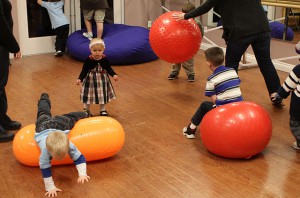Even though they are generally linked to youngsters with special needs, sensory toys have been for a while used in combination with children for several intents and purposes. To put it differently, sensory toys are any type of toy which causes a reaction from any of the child’s five basic senses. Those senses are touch, sight, sound, smell and taste. While not many sensory toys target smell and taste, there’s a good number of sensory toys that set off a child’s sense of touch, sight and sound. So just why is it that they are useful?
At a very basic level, many children have a particular sense that has been deprived or under-developed. This can cause problems that are not always apparent through regular play. For example, a child with poor eyesight can often be drawn towards sensory toys that appeal to their sense of touch. Different feelings (rough, smooth, silk, crinkly etc.) can all be fascinating to a child that cannot easily distinguish between textures by sight alone. This in turn can help the child develop the senses that they do have full use of. As an example, a child with eyesight issues might start with touch based sensory toys before moving on to basic braille.
Sensory toys can also be extremely efficient at dealing with children with anxiety issues, or those that are easily distracted. Studies have shown that many children that are easily distracted can dramatically improve their ability to focus on a task at hand when introduced to a sensory toy. This could be a stress ball that the child can subconsciously squeeze, or even just a simple strip of Velcro that the child can rub with his fingers. The simple repetitive act of engaging the sense of touch can often be enough to allow the child to focus on other matters.
There are many different kinds of sensory toys. Basic touch based sensory toys can often include water or sand elements that have a distinct and relaxing feel when flowing through a child’s fingers. Similarly, the contrast between a soft, smooth silk scarf and the friction of a strip of Velcro can work wonders when dealing with a particularly angry or distressed child. For this reason, sensory toys are often used as meditation devices to help children better understand their emotions.
Although sensory toys are often used primarily in schools, there are many sensory toys that a child can use at home. Simple things like a water cushion or air cushion for sitting on can work wonders for a child that finds it difficult to sit in one place. This has the added benefit of being transportable to school, once the teacher approves. Not every sensory toy will work for your child, but a little experimentation to understand what kind of sensory toy gets your child’s attention can be tremendously rewarding in helping your child better express themselves, both physically and emotionally.
